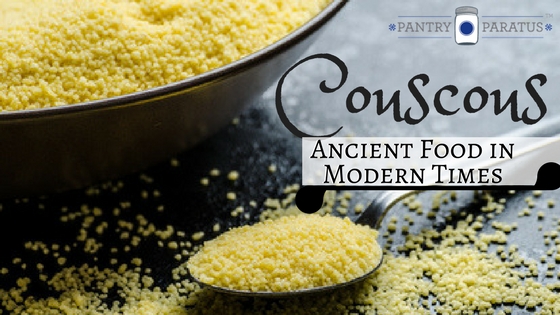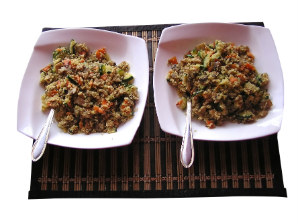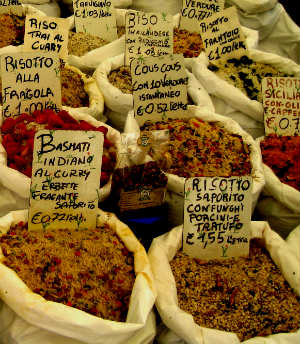
I ask a lot of questions about my food—oh, not the food on the plate in front of me. I have eaten in too many foreign countries and permaculture events to stop and question that. No. I just eat, smile, and hope no one tells me until I have properly digested.
I ask questions about food like this…where does it come from? What are the traditional ways to prepare it? Who has altered it and how? What do they do with this over in India, Russia, or South America? And how will this food nourish my family?
Couscous. Have you ever thought of it? What is Couscous?

My husband created a couscous ban in our house when our firstborn child was about 9 months old. We were picking it out of his chub-rolls for hours after dinner. I am fairly confident that it contributed to the Bathtub Backup of ’06.
But what is couscous, really?
If you have ever sat through one of my classes, you have heard about the various types of wheat and their common uses (hard flours for yeast-based goods, soft wheat for quick breads, yada and so on). Durum Wheat (also known as Semolina when in processed flour form) is the most common pasta flour and it is a high-protein wheat.
Couscous is basically tiny wheat-balls made from wet clumps of Durum that have been dried and then steamed. It is a form of pasta that originated in North Africa and spread throughout many ancient cultures of the world. Couscous experts (can you believe it, I guess it’s true there is an expert for everything) debate about just how ancient this food is, but the 16th and 17th century recipes for it are virtually unchanged from the basic construction of it today (Wright, 2012).

A savory and filling dish, sometimes couscous is prepared plainly with butter or sour milk and usually served with meats and spices like cumin. There are, however, sweeter versions of the grain in some cultures.
Since couscous is simply one ingredient (sometimes two, when a pinch of salt is added), it’s a bit difficult to ruin the whole-foods nature of this ancient comfort food. Leave it to the modern food industry to do it for you if you are going for flavored varieties. You are fairly safe if you pick up a box of “original” and see an ingredients list of one. In the “original” box of couscous, the only problem I have with it is that the wheat has been sifted into dead flour, eliminating much of the nutrition.
Beware: “Basil and Herb” or “Olive Oil and…” may contain MSG lite ( aka ‘autolyzed yeast extract’).
We are so far removed from food anymore, that we often do not even know what we are eating, and we certainly would not know where to start on the Home Game.
If you’re teaching Africa in a school unit, you are curious about your food, or you just want to restore the nutritional value to what you are eating, you can make your own!
Curious about how it is made commercially?
Resource:
Wright, Clifford. 2012. History of Couscous. http://www.cliffordawright.com/caw/food/entries/display.php/topic_id/3/id/34/
Pictures:
Couscous in bowls: http://www.rgbstock.com/photo/n0XYaJy/Couscous
Couscous at market: http://www.rgbstock.com/photo/mf3M8bq/risotto
